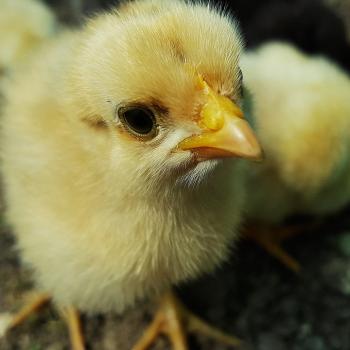 At some point in life, if we are very, very lucky, we meet an individual who not only teaches us the personal and relationship lessons we need on our path, but who also moves us forward by showing how and why the game of life is worth living.
At some point in life, if we are very, very lucky, we meet an individual who not only teaches us the personal and relationship lessons we need on our path, but who also moves us forward by showing how and why the game of life is worth living.
My friend Doris was such a person. I still marvel that I even met her, because our introduction occurred a long way from where either of us lived. The year was 1988; the place was an ashram called Prasanthi Nilayam in central India, a few hours north of Bangalore. I was attending my second spiritual retreat there when I was introduced to Doris, another one in our group of American participants. But Doris did not need to belong to any group. She was well known at the ashram, staying there frequently in the living quarters she had purchased some years previously. And, she was special to the late spiritual leader Satya Sai Baba.
At that time, Doris was probably in her early 70’s and a widow; her husband had been killed in a car crash some years earlier. She lived alone in a small house near the Palo Alto high school, but was emotionally close to her son and grandchildren. She was petite, white-haired, and elegant. None of these personal details would make Doris stand out. But what she did was truly remarkable. She had purchased a large machine to translate English into Braille, and she worked daily for years to transcribe all of Sai Baba’s numerous writings and lessons that she then mailed to blind people around the world. Doris was very modest about this and never asked anyone else to help pay the expenses.
When I moved to northern CA a few years later, I joined the small group who met at Doris’ house one night each week for spiritual discussions and meditation. Doris, with her sparkle and twinkling eyes, always reminded me of Teilhard de Chardin’s phrase, “Joy is the most infallible sign of the presence of God.” Once I asked her how she managed to do all the work she accomplished and still look so happy, peaceful, and radiant. She smiled and told me, “I recite the Gayatri mantra 100 times each day.”
I assure you, the Gayatri Mantra is nothing like any prayer you’ve ever known.
The Gayatri Mantra is one of the oldest mantras in existence. It is believed to have first appeared in the Rig Veda between 1800 and 1500 BCE (Before Christian era), and is called the ‘Mother of the Vedas,” or, the mother of all scriptures. It is a universal prayer, not confined to any sect or creed, as well as a mantra to be chanted. In fact, the word “Gayatri” means “that which, when chanted, saves.”
The Gayatri is quite short, only four lines long—an invocation, plus three lines of eight syllables each. In Sanskrit, the four lines are:
Om, Bhur Bhuvah Suvah
Tat Savitur Varenym
Bhargo Devasya Dheemahi
Dhiyo Yo Nah Prachodaya
Since each one of those Sanskrit words has several different meanings, over the centuries there have been many, many translations of the Gayatri Mantra, even in English (where Sanskrit is pronounced phonetically). But in every translation, the four basic points of the Gayatri can be recognized.
And those four lines express what may be the most perfect form of prayer: Invoking, praising, thanking, and requesting.
The first line, Om, Bhur Bhuvah Suvah:
Invokes the Divine Spirit as “Om,” the eternal holy sound (the Word in the Gospel of Saint John), the very basis of creation, from the very beginning pervading every part of the universe in all forms—physical, mental, and spiritual.
The second line, Tat Savitur Varenym:
Praises and adores the power of the Ultimate Reality for life-giving energy to all beings.
The third line, Bhargo Devasya Dheemahi:
Recognizes in gratitude that this same Spirit is in each one of us.
The fourth line, Dhiyo Yo Nah Prachodaya:
Requests that all may realize the one Truth
In my favorite English translation, the Gayatri accomplishes these aims with the following words:
Om, Divine Spirit present in body, mind, and soul.
We adore the power of your eternal Reality that radiates life energy into the world.
We contemplate with wonder your Spirit within us.
Stimulate our minds to realize the Truth completely.
Ramana Maharshi, the great spiritual teacher of South India, described the Gayatri in this way:
Can anything excel it? Only those who cannot do it look for others. It
contains the whole range of truth in it. [It] will lead to true meditation,
and it is the means for realizing the Self.
Sai Baba recommended saying the Gayatri Mantra at least three times each morning and evening. I imagine that Doris no doubt inwardly chanted the Sanskrit words since she was so familiar with the Mantra. But even if she said an English version, she would have been faithfully reciting the Gayatri one hundred times a day until she passed away in her early 90’s.
After her death, her son, following the directions she had left him, had a small memorial service for Doris at her house. My husband Ed and I attended along with other close friends who shared wonderful vignettes about Doris.
But this gathering concluded unlike any other memorial service we’ve experienced.
We were all invited outside to the street in front of Doris’ house where we were asked to join hands and form a circle. Then in accordance with his mother’s request, her son said, “Now we sing and do the Hokey Pokey!” And we all did.
For those who don’t know or can’t remember the words, here they are:
“You put your right leg in, you put your right leg out, you put your right leg in and you shake it all about.
You do the hokey pokey and you turn yourself around.
That’s what it’s all about.”
(Repeated then for the left leg, right and left hands, head, and the whole body.)
Why did she choose this song? To me it represented Doris’ lightness and joy, her ability to not take earthly problems too seriously. From her years of reciting the Gayatri Mantra, Doris had reached the realization that we are all one in the Spirit, dancing with God.
“And that’s what it’s all about.”
















